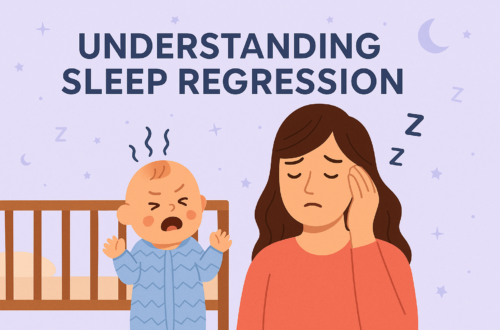By the time your baby turns 1, their sleep needs have evolved significantly from their newborn days. A structured, consistent sleep schedule can support healthy growth, improve mood, and reduce stress for both the child and parents.
In this guide, we’ll walk you through:
- How much sleep a 1-year-old needs
- A sample daily sleep schedule
- Common sleep challenges
- Strategies to support healthy sleep habits
🕒 How Much Sleep Does a 1-Year-Old Need?
According to the American Academy of Sleep Medicine:
- Total sleep needed: 12–14 hours per day
- Nighttime sleep: ~10–12 hours
- Daytime sleep (naps): ~2–3 hours, typically in 1 or 2 naps
At this age, most toddlers transition from 2 naps to 1—though this varies by child.
🗓️ Sample Sleep Schedule for a 1-Year-Old (2-Nap Routine)
| Time | Activity |
|---|---|
| 7:00 AM | Wake up, breakfast |
| 9:30 – 10:30 AM | Morning nap |
| 12:00 PM | Lunch |
| 2:30 – 3:30 PM | Afternoon nap |
| 5:30 PM | Dinner |
| 6:30 PM | Bath, bedtime routine |
| 7:00 – 7:30 PM | Bedtime |
🕑 Sample Sleep Schedule (1-Nap Routine)
| Time | Activity |
|---|---|
| 7:00 AM | Wake up |
| 12:00 – 2:00 PM | Midday nap |
| 7:00 – 7:30 PM | Bedtime |
This routine typically becomes the norm between 12–18 months, as toddlers drop their morning nap.
🛠️ Tips for Managing the Transition from 2 Naps to 1
- Begin by pushing the morning nap later by 15–30 minutes every few days.
- Offer a quiet time in place of a second nap to ease the transition.
- Keep bedtime slightly earlier during this change to avoid overtiredness.
💤 Bedtime Routine Best Practices
A predictable wind-down routine helps signal bedtime and improves sleep quality. Try:
- Bath
- Brushing teeth
- Storytime
- White noise or lullabies
- Lights out at a consistent time
Keep the routine calm, consistent, and short (~20–30 minutes).
❗Common Sleep Challenges at 12 Months
1. Night Wakings
Still common, often due to:
- Teething
- Growth spurts
- Separation anxiety
🛠 Tip: Offer brief comfort without creating new sleep associations (like rocking every time).
2. Early Wake-Ups
Waking before 6:00 AM? Causes may include:
- Overtiredness
- Light exposure
- Hunger
🛠 Tip: Use blackout curtains, ensure naps aren’t too long or too late in the day, and offer a high-protein bedtime snack if needed.
3. Nap Resistance
Resisting one or both naps? Watch for signs your toddler is ready to transition to 1 nap (e.g., refusing morning nap multiple days in a row).
📊 Sleep Needs Chart for 1-Year-Olds
| Age | Night Sleep | Nap(s) | Total Sleep |
|---|---|---|---|
| 12 months | 10–12 hrs | 2 naps (1–1.5 hrs each) | 13–14 hrs |
| 13–18 months | 10–12 hrs | 1 nap (2 hrs) | 12–14 hrs |
🧠 Developmental Milestones That Impact Sleep
At 1 year, toddlers are learning to:
- Stand and walk
- Say their first words
- Experience increased independence
These cognitive and physical leaps may temporarily disrupt sleep. Stay consistent and supportive.
🧘 Final Thoughts
Establishing a solid sleep routine for your 1-year-old lays the foundation for long-term healthy sleep habits. Expect occasional regressions, but consistency, patience, and flexibility will go a long way.




